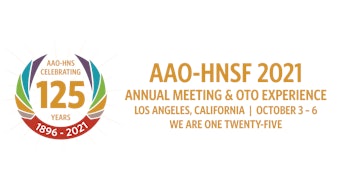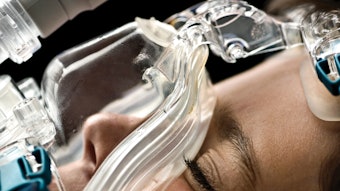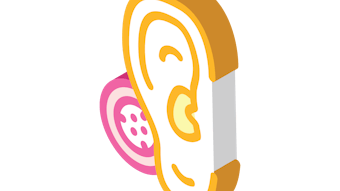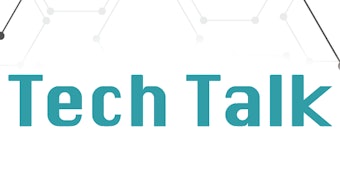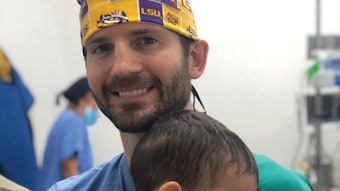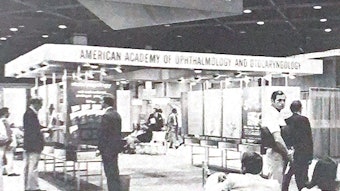Out of Committee: Sleep Disorders | Upper Airway Stimulation: Advances in Patient Selection and Surgical Technique
Upper airway stimulation (UAS) has provided a dramatic advancement in our ability to manage select patients with obstructive sleep apnea (OSA).
Colin T. Huntley, MD, and Maurits Boon, MD, members of the AAO-HNS Sleep Disorders Committee
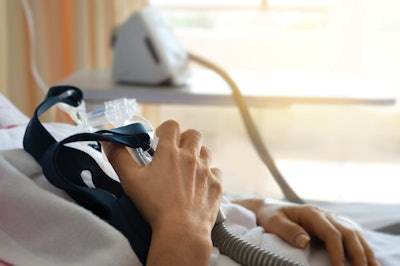
The initial clinical trial to support FDA approval of UAS therapy, the Stimulation Therapy for Apnea Reduction (STAR) trial, was published in The New England Journal of Medicine in 2014. This study included 126 patients and saw significant improvement in the apnea-hypopnea index (AHI), oxygen desaturation nadir (ODI), and quality of life indices.1 This cohort was then followed and reassessed at 18, 24, 36, 48, and 60 months, showing maintenance of therapeutic and clinical benefit.2–6
The criteria and findings from the STAR trial helped establish the current FDA recommended indications for UAS. The mainstay of the current recommended indications includes patients over 18 years of age, attempted and failed positive pressure therapy, AHI between 15-65 with less than 25% of events central in nature, lack of complete concentric collapse at the level of the velum on preoperative drug-induced sleep endoscopy (DISE), and lack of any neuromuscular disease, which may preclude benefit from neurostimulation.
Following the STAR trial, hundreds of papers have been published confirming clinical benefit, identifying factors to improve patient selection, outlining postoperative optimization, and exploring new techniques to improve surgery. One such endeavor is the Acute Decompensated Heart Failure National Registry (ADHERE) registry, which is a multinational, multicenter, ongoing prospective study designed to collect patient demographic and outcome data. The most recent publication of this cohort included 1,017 patients and assessed usage, quality of life, and sleep study outcomes at 12 months. The authors found a reduction in median AHI from 32.8 preoperatively to 9.5 at 12 months. This equated to a 69% success rate using the Sher criteria (50% reduction in AHI to a level less than 20) at 12 months. Of the patients, 74% had resolution of symptoms of daytime sleepiness assessed as an Epworth Sleepiness Score less than 10. Lastly, patient usage was 5.7 hours per night at 12-month follow-up.7
In addition to these outcome variables, the authors of the ADHERE papers have conducted regression analyses to identify predictors of patient success. In a study of 508 patients by Heiser et al., univariate analysis showed age and body mass index (BMI) to be predictors of success. Each one-year increase in age was associated with a 4% increase in odds of treatment success, and each one-unit increase in BMI was associated with 9% reduction in odds of treatment success. The multivariate model confirmed age as a significant predictor.8 In the aforementioned study of 1,017 patients by Thaler et al., logistic regression showed the female sex to have increased odds of favorable AHI response and each one-unit decrease in BMI to be associated with an 8.5% increase in favorable response.7 DISE has also recently been evaluated by Huyett et al. to assess predictors of UAS outcomes. DISE videos were independently evaluated in a cohort of 343 patients from 10 centers. The authors found complete oropharyngeal wall obstruction to be predictive of decreased surgical response and complete tongue-base obstruction to be predictive of increased surgical response.9
In addition to identifying predictors of success to better identify and preoperatively counsel patients, new surgical techniques have been developed. The latest development has been the adoption of a two-incision technique for device implantation. With this, the respiratory sensor is placed through the chest incision, deep to the internal pulse generator, and the mid-axillary intercostal incision is abandoned. Kent et al. first published this technique. They describe designing the chest incision 3 cm lateral to the sternum and 5 cm below the clavicle. The traditional pocket for the implantable pulse generator is developed, and dissection is subsequently carried through the pectoralis major. The intercostal muscles are identified, and the respiratory sensor is placed in the second intercostal space deep to the external intercostal and superficial to the internal intercostal.10 The obvious benefit of this approach is in limiting an incision and negating the risk of pain or infection at that site. There have been anecdotal reports of improved surgical times and respiratory sensing. However, more research is required to detail best practices and benefits.
UAS has become a valuable tool to manage select patients with OSA. Recent data show increased age, low BMI, female sex, and lack of complete lateral oropharyngeal obstruction on DISE to be predictors of success with this therapy. New techniques and devices continue to be developed in an effort to optimize patient outcomes.
References
1. Strollo PJ, Soose RJ, Maurer JT, et al. Upper-airway stimulation for obstructive sleep apnea. N Engl J Med. 2014. doi:10.1056/nejmoa1308659
2. Strollo PJ, Gillespie MB, Soose RJ, et al. Upper airway stimulation for obstructive sleep apnea: durability of the treatment effect at 18 months. Sleep. 2015. doi:10.5665/sleep.5054
3. Woodson BT, Soose RJ, Gillespie MB, et al. Three-year outcomes of cranial nerve stimulation for obstructive sleep apnea: The STAR Trial. Otolaryngol Head Neck Surg. 2016. doi:10.1177/0194599815616618
4. Soose RJ, Tucker Woodson B, Boyd Gillespie M, et al. Upper airway stimulation for obstructive sleep apnea: Self-reported outcomes at 24 months. J Clin Sleep Med. 2016. doi:10.5664/jcsm.5390
5. Gillespie MB, Soose RJ, Woodson BT, et al. Upper airway stimulation for obstructive sleep apnea: patient-reported outcomes after 48 months of follow-up. Otolaryngol Head Neck Surg. 2017. doi:10.1177/0194599817691491
6. Woodson BT, Strohl KP, Soose RJ, et al. Upper airway stimulation for obstructive sleep apnea: 5-year outcomes. Otolaryngol Head Neck Surg. 2018. doi:10.1177/0194599818762383
7. Thaler E, Schwab R, Maurer J, et al. Results of the ADHERE upper airway stimulation registry and predictors of therapy efficacy. Laryngoscope. 2020. doi:10.1002/lary.28286
8. Heiser C, Steffen A, Boon M, et al. Post-approval upper airway stimulation predictors of treatment effectiveness in the ADHERE registry. Eur Respir J. 2019. doi:10.1183/13993003.01405-2018
9. Huyett P, Kent DT, D’Agostino MA et al. Drug-induced sleep endoscopy and hypoglossal nerve stimulation outcomes: a multicenter cohort study.
10. Kent DT, Weiner JS, Chio EG, Weidenbecher M. Hypoglossal nerve stimulator implantation via a 2-incision technique. Oper Tech Otolaryngol Head Neck Surg. 2020. doi:10.1016/j.otot.2020.06.002
